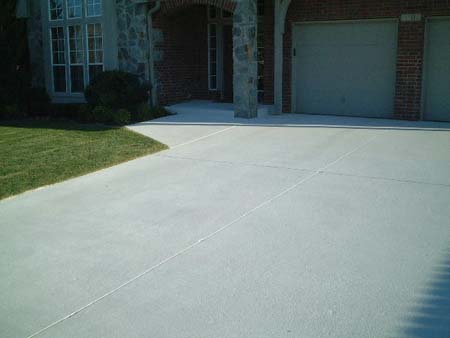
Making your Surfaces Slip-Resistant with Broom Finish Concrete
Broom finishes are the ideal way to make a concrete surface slip-resistant. Although broom finish concrete is generally not ideal for a decorative concrete surface, they are usually the most convenient way to add slip-resistant qualities to other types of cement surfaces.
After the slab has been poured, struck off with a screed and finished with a bull float, make sure to allocate time to allow the bleed water to evaporate (many of the lower water/cement ratios exterior concretes will not result in significant bleed water).
To Trowel or Not to Trowel
Should You Trowel Finish before the Broom Finish?
Although the use of a trowel on concrete that is to be broom-finished is debatable among concrete finishers, many still swear by troweling before brooming. If you decide to trowel the surface of the cement, take care to not overly finish the concrete surface by working out too much of the air.
You may choose to trowel two times before you begin brooming; just ensure that you start brooming promptly after the second time you trowel so that the surface does not become too trowel hardened. Otherwise, it may be extremely difficult to achieve enough texture during the brooming step.
Broom Finishing Techniques
To broom finish, you should run the concrete broom in a perpendicular angle to any slopes, as the broom marks ideally run toward the drain for efficient water drainage.
You should then immediately cure the concrete after the brooming with polyethylene sheets or via a sprayed curing compound. Many concrete finishers use a curing agent that infuses color when you are curing grey concrete, as it helps them to see where the cure has already received application. The color then fades within a couple of days.
It is important to remember that broom finish concrete doesn’t have to be plain. You can infuse decorative finishes by sweeping the concrete broom in various directions. The easiest way to broom, however, is to run the broom from side to side without stopping. After you have completed one row, bring the broom up and then put it back down to move to other side. Pulling the broom towards you typically facilitates the art of brooming.
Types of Concrete Brooms
Concrete brooms come in a wide variety of sizes, shapes, materials and designs. Many of today’s cement brooms are made in such a manner as allow you to hold the broom at a perfect angle when brooming.
Concrete brooms may be constructed of wood, plastic, or aluminum, depending on your needs, wants and personal preference. Many concrete finishers choose plastic because it does not warp or rot.
Cement broom bristles may be made of polypropylene, horsehair, or nylon, and can be purchased in a variety of stiffness to create unique textures. You may also use a wire comb to create extreme textures, if desired. Nylon bristles are the priciest option, although they generally last two to three times longer than other types of bristles.
Finally, some brooms do not have handles, while others are attached to fresnos or bull floats. The brooms without handles are pulled across the concrete’s surface with ropes. This is especially ideal for very wide pads that make pulling a broom across the surface a difficult task.
